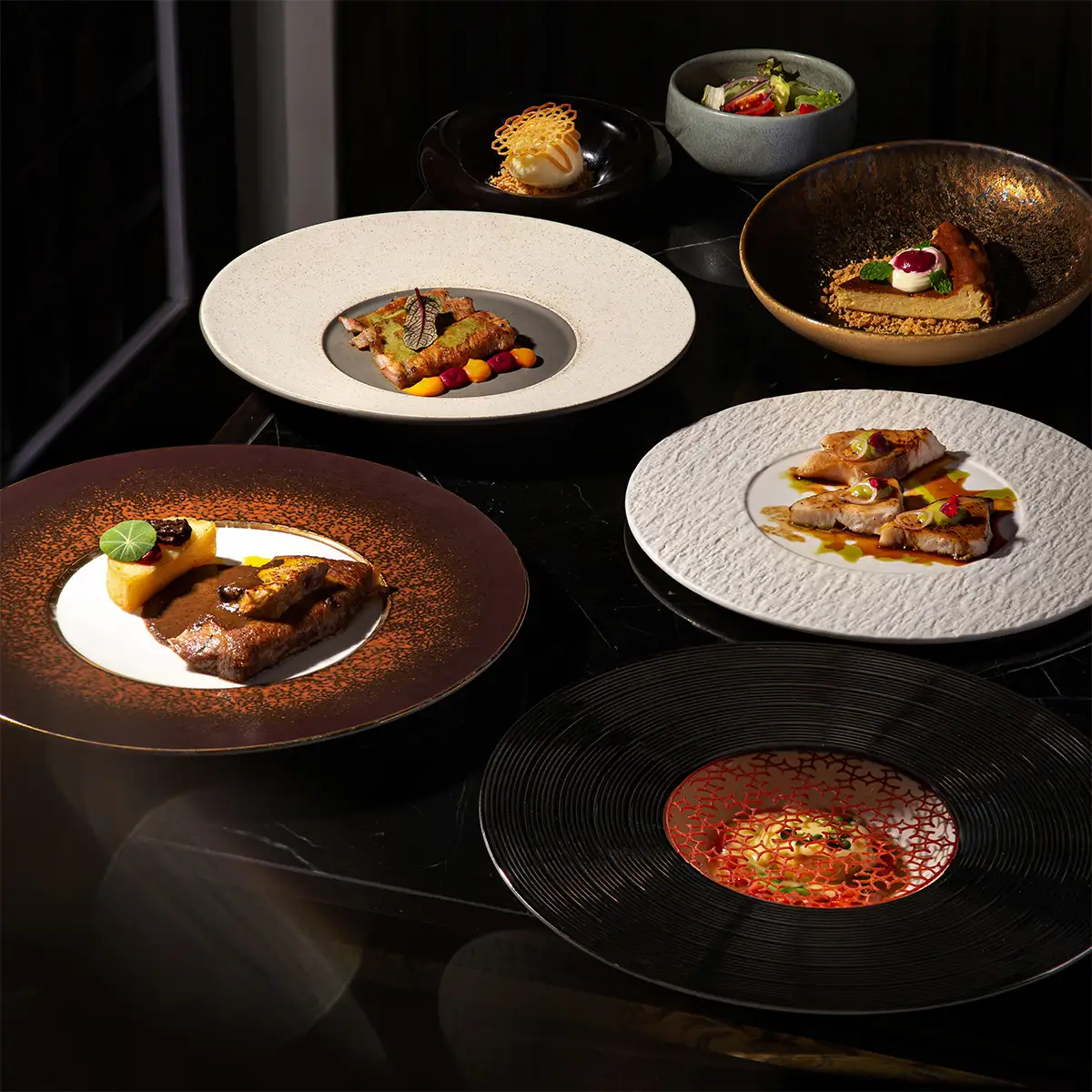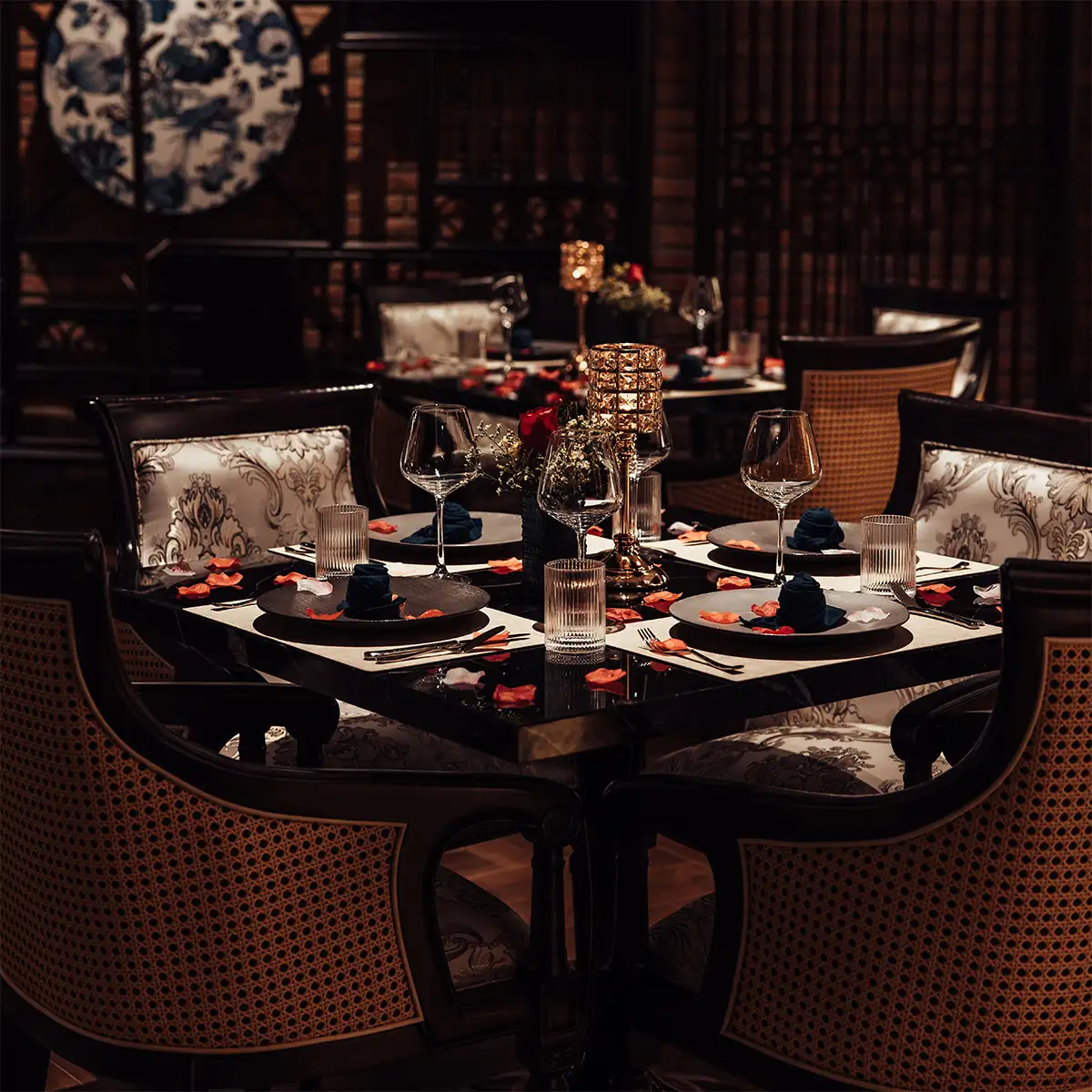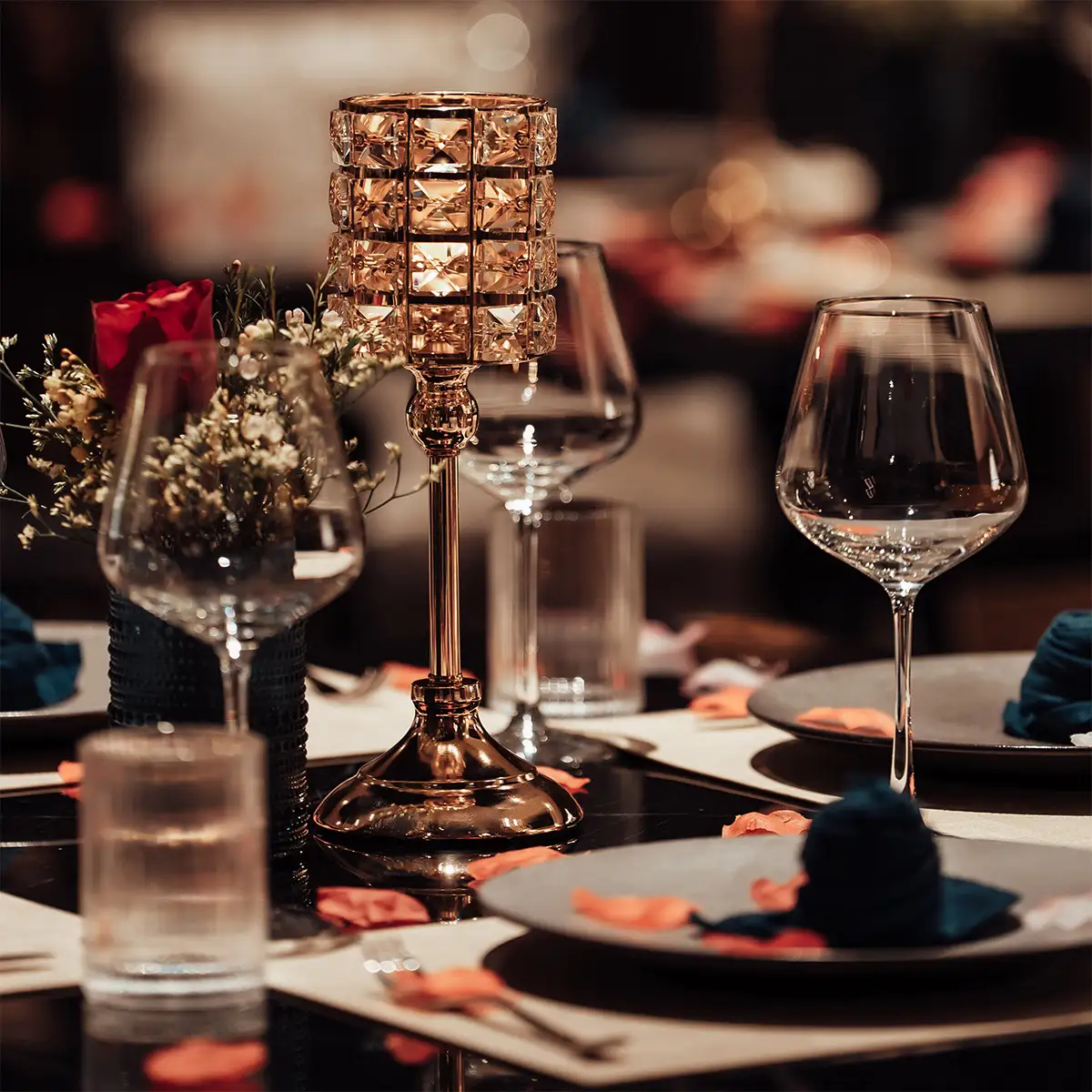- 1. The criticality of specialized fine dining staff training
- 2. Core components of a comprehensive fine dining staff training program
- 2.1. Mastery of fine dining service protocols and etiquette
- 2.2. In-depth menu and beverage knowledge
- 2.3. Advanced guest interaction and communication skills
- 2.4. Operational efficiency and technology proficiency
- 2.5. Food safety, hygiene, and allergen awareness
- 2.6. Cultivating essential soft skills
- 3. Effective strategies for implementing fine dining staff training
In fine dining, exceptional cuisine is expected—but it is the caliber of service that truly defines the guest experience. At Moca Dining, we believe that fine dining restaurant staff training is the foundation of unforgettable hospitality. More than just mastering procedures, effective training ensures service that is both technically precise and genuinely welcoming. This article explores the key pillars of fine dining restaurant staff training, highlighting how it enhances guest satisfaction, fosters loyalty, and upholds a brand’s reputation for excellence.
1. The criticality of specialized fine dining staff training
Investing in a specialized training program is not an expense but a foundational investment in the restaurant's success and longevity. It is the primary driver of the intangible qualities that define a luxury dining experience.
- Enhancing guest satisfaction and loyalty: A meticulously trained staff delivers a seamless and memorable experience by anticipating needs before they are articulated. From the moment a guest arrives, every interaction is an opportunity to exceed expectations. There is a direct and proven correlation between superior service quality and the likelihood of repeat business and glowing reviews.
- Driving revenue and upselling opportunities: Proficiency in menu knowledge and wine pairing is a critical revenue driver. A well-trained server does not simply take an order; they guide the guest through a culinary journey. The art of suggestive selling, when executed with sophistication and genuine expertise, enhances the guest's meal and increases the average check size. This is a core component of any effective fine dining wine service training, turning staff into trusted advisors rather than mere order-takers.
- Protecting and enhancing brand reputation: Consistency is the hallmark of any respected brand. Premium restaurant service standards ensure that every guest receives the same high level of care and professionalism, regardless of who is serving them or on what day they dine. This consistency is vital for mitigating the risk of negative experiences that can quickly tarnish a hard-won reputation in the digital age.
- Reducing staff turnover and boosting confidence: Comprehensive training empowers staff with the skills, knowledge, and confidence to perform their duties flawlessly. This sense of mastery and competence is a powerful motivator. By investing in elite server development, restaurants create a professional and supportive work environment that not only attracts top talent but also fosters long-term retention, reducing the significant costs associated with high staff turnover.
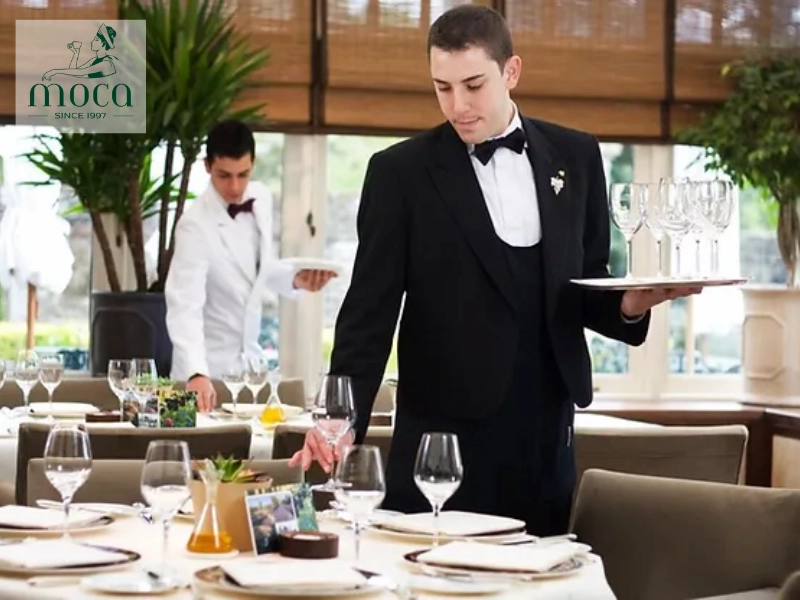
Specialized staff training – the key to crafting refined and lasting fine dining experiences.
Learn more: The Art of Fine Dining Catering and Its Unmatched Impact
2. Core components of a comprehensive fine dining staff training program
An effective training regimen is multifaceted, covering everything from technical execution to the nuances of human interaction. It should be structured, detailed, and continuous.
2.1. Mastery of fine dining service protocols and etiquette
This is the technical foundation of exceptional service. Key areas include:
- The sequence of service: A precise, unalterable flow from greeting and seating to order taking, course delivery, billing, and a gracious departure.
- Table maintenance and mise en place: Absolute precision in setting, clearing, and crumbing the table throughout the meal.
- Synchronized service: The elegant technique of delivering dishes and clearing plates in perfect unison, a hallmark of high-end establishments.
- Anticipatory service: The ability to proactively address guest needs, such as refilling a water glass before it is empty or noticing a guest looking for their server.
- Formal yet personalized hospitality: Mastering the delicate balance between maintaining professional decorum and fostering genuine, warm engagement with guests.
A practical training tool involves role-playing. For instance, a common scenario is handling a spilled drink: the trained response involves immediate, calm action—one server discreetly shields the guest and assists them, while another simultaneously and silently replaces the soiled linen and resets the table with minimal disruption.
2.2. In-depth menu and beverage knowledge
Staff must be absolute experts on every item they serve. This includes:
- Detailed dish understanding: A complete knowledge of ingredients, preparation methods, potential allergens, dietary information, and the story behind the dish's sourcing or creation.
- Comprehensive wine and beverage knowledge: A thorough understanding of the wine list, including varietals, regions, and vintages, is essential for confident pairing suggestions. This is the focus of dedicated fine dining wine service training.
- The art of storytelling: The ability to articulate the unique qualities of each dish and beverage, transforming the menu from a list of items into a collection of experiences.
Industry research confirms the value of this knowledge. Studies, including foundational work from the Cornell School of Hotel Administration, have shown that staff menu knowledge directly impacts customer perception of quality and can significantly increase the average check size through confident, informed recommendations.

Flawless technique – mastering service etiquette and deep menu knowledge is what elevates fine dining to true excellence.
Learn more: The Curated Palate: A Deep Dive into the World of Fine Dining Magazines
2.3. Advanced guest interaction and communication skills
Technical skills must be paired with sophisticated communication. This involves training in:
- Active listening: Genuinely hearing guest preferences and concerns to provide tailored service.
- Sophisticated upselling: Framing recommendations as enhancements to the guest's chosen experience, rather than as a sales tactic.
- Complaint resolution and service recovery: A structured process for turning a negative experience into a positive one, demonstrating the establishment's commitment to guest satisfaction.
- Reading non-verbal cues: Adapting service style based on the guest's body language and mood.
2.4. Operational efficiency and technology proficiency
A modern fine dining restaurant relies on seamless coordination. Staff must be proficient in the use of Point-of-Sale (POS) systems, reservation software, and other technologies.
Understanding the critical communication flow between the front-of-house and the kitchen is essential for managing timing and ensuring a smooth service pace.

Elevated communication and tech fluency – the cornerstones of seamless modern fine dining operations.
2.5. Food safety, hygiene, and allergen awareness
This area is non-negotiable. Training must cover:
- Strict adherence to protocols: Following rigorous standards for food handling, storage, and sanitation.
- Comprehensive allergen knowledge: A deep understanding of common food allergens and the critical importance of preventing cross-contamination. This specialized knowledge, or allergen awareness for servers, is a crucial aspect of guest safety.
- Impeccable personal hygiene: Upholding the highest standards of personal presentation and cleanliness.
2.6. Cultivating essential soft skills
Beyond technical skills, elite service staff possess highly developed soft skills, including:
- Professionalism and composure: Maintaining grace and control, especially under pressure.
- Empathy and emotional intelligence: Understanding and responding to the emotional state of guests.
- Teamwork: A collaborative spirit is essential for synchronized service and a positive work environment.
- Adaptability and problem-solving: The ability to think critically and find solutions to unexpected challenges.
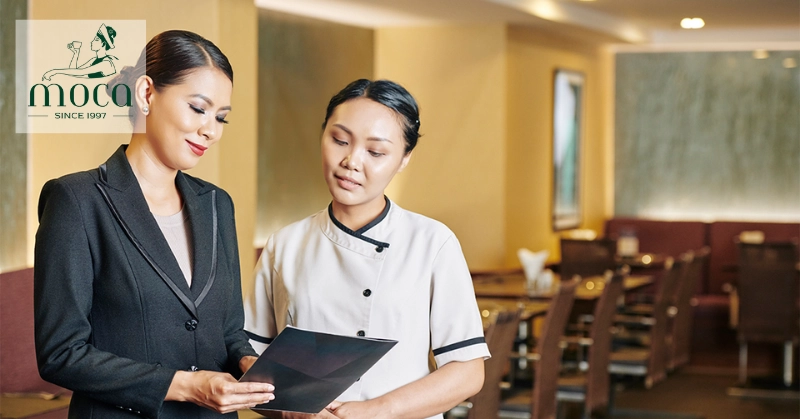
Food safety and soft skills – essential foundations for trust and elevated service excellence.
3. Effective strategies for implementing fine dining staff training
A world-class program requires a strategic approach to implementation and continuous improvement.
- Structured onboarding and progressive training phases: A robust onboarding process is critical. This should begin with a comprehensive orientation covering the restaurant's culture and values, followed by shadowing experienced team members. Hands-on, mentored practice and role-playing scenarios refine skills. The entire process should be codified in a detailed fine dining server training manual that serves as a consistent reference.
- Leveraging technology for modern training: Technology can significantly enhance training effectiveness. At Moca Dining, we utilize a proprietary digital platform that provides our team with mobile-friendly access to learning modules, menu updates, and our digital fine dining server training manual. Interactive quizzes and digital Standard Operating Procedures (SOPs) ensure knowledge retention and consistency across the team.
- Continuous learning and development: Training is not a one-time event. Advanced culinary service training must be ongoing. Regular refreshers on new menus or service techniques, cross-training staff in different roles to build a more flexible team, and encouraging external learning, such as sommelier courses, are vital for maintaining the highest standards.
- Robust feedback, evaluation, and coaching systems: A culture of continuous improvement is fueled by feedback. This includes regular performance reviews, constructive peer feedback, and, most importantly, analyzing guest feedback from surveys and online reviews to identify areas for targeted training. Personalized coaching helps individuals build on their strengths and address areas for development.
- Addressing common training challenges: High employee turnover can be mitigated by creating an engaging and supportive culture where staff feel valued. For language barriers, visual aids and multilingual materials can be effective. To maximize limited training time, strategies like micro-learning—delivering information in short, focused bursts—can be integrated into daily pre-shift briefings.
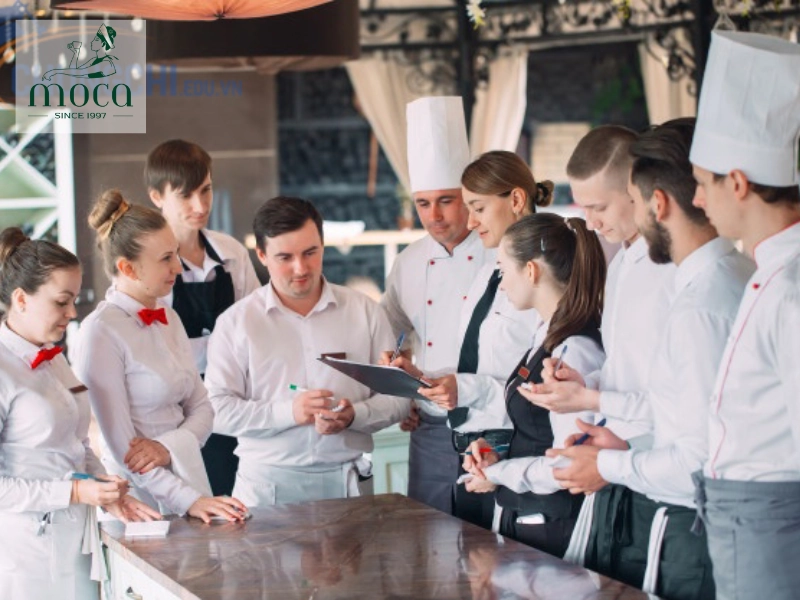
Effective training strategy – blending technology, feedback, and continuous growth to shape world-class fine dining teams.
Exceptional service is not an accident; it is the result of a deliberate and unwavering commitment to continuous, specialized fine dining restaurant staff training. It is the single most powerful tool a restaurant has to differentiate itself, build a loyal clientele, and secure its reputation as a leader in luxury hospitality. This dedication is the very essence of the guest experience. At Moca Dining, our reputation is built on the excellence of our expertly trained, passionate staff. We invite you to make a reservation and experience the difference true professionalism makes—from the moment you walk through our doors.







